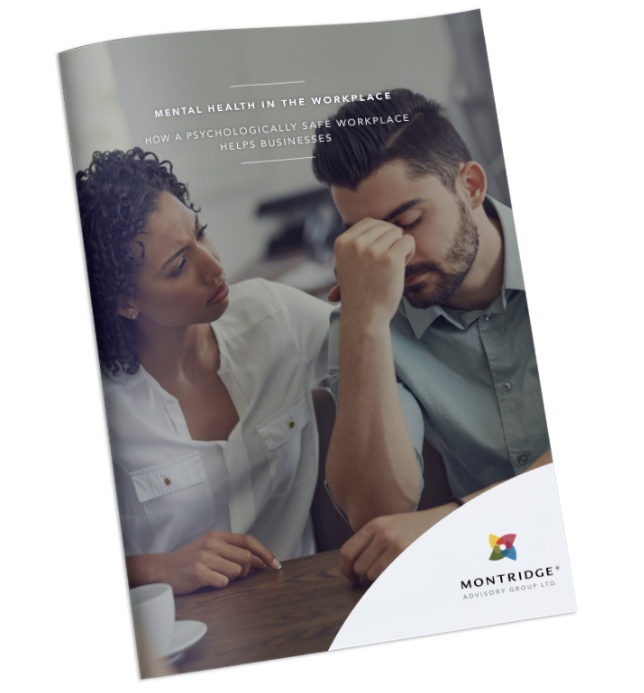
Melissa Montoril
Melissa is an employee benefits specialist with over ten years of experience in group insurance.
We’ve all heard it thrown around in conversation before… Seasonal Affective Disorder, the rainy day blues, bad weather getting us down…
Everybody's mood can be affected by the weather. It dictates what we wear, when we choose to travel and the activities we partake in. As the seasons change and days become shorter, some individuals are more largely impacted by this change than others. Especially living in North America, this change can have quite the affect on our day to day lives.

It is said that 1 in 3 people experience Seasonal Affective Disorder (SAD) during their lifetime, and can have serious (and long term) impacts on mental health. Lowered productivity, a decrease in employee engagement, and higher employee turnover are just a few results that can come from Seasonal Affective Disorder. As an employer, it is important to understand SAD and help your team through the winter months. In this blog, we will cover:
- The definition of seasonal affective disorder, and how can you classify it in comparison to diagnosed depression
- The effects of SAD in the workplace and how you, as an employer, can help employee mental health in the workplace
- Providing employees with mental health resources as a part of their benefits package
Seasonal Affective Disorder: Explained
When understanding SAD, it is important to note the difference between SAD and depression. SAD is only around for one season, hence the name Seasonal Affective Disorder, and is a temporary altering of a person’s mood. For winter-pattern SAD, additional specific symptoms may include:
- Oversleeping (hypersomnia): Oversleeping can cause many issues, including loss of inhibition and employee productivity being negatively affected
- Overeating, particularly with a craving for carbohydrates causing weight gain
- Social withdrawal (feeling like “hibernating”) in the winter season. This could potentially include employees being more reserved than normal
Quick note: Seasonal Affective Disorder can also be experienced during the summer months, however it can show up in different forms. Specific symptoms for summer-pattern SAD may include:
- Trouble sleeping (insomnia)
- Poor appetite, leading to weight loss
- Restlessness and agitation
- Anxiety
- Episodes of violent behavior
For more information about summer-pattern SAD, visit this link.
There is often a stigma behind employees communicating about mental health issues in the workplace. As an employer, it is important to create an open environment to reduce your risk of turnover during the winter season.
The Effects of SAD in the Workplace
It is important that you create an environment where your employees feel comfortable reaching out to you if they are struggling with a mental health challenge. If you’re managing a remote workforce, you could send out informational emails and flyers to start a conversation. If your staff is working out of a physical office, you can do the same and also put up informational posters to raise awareness.
You could also invite a mental health professional to give a talk on SAD to your staff. If you’re managing a hybrid workforce (a mix of office-based and remote workers), you may want to also stream the talk online for accessibility.
Providing your managers and team leads with training on how to recognize the symptoms of seasonal affective disorder is another effective way to create awareness around SAD. Updating mental health resources within your employee benefits plan to include virtual health assistance, a broad range of mental health practitioners, and increased reimbursement levels will contribute to keeping your team happy.
How Employers Can Help Navigate SAD With the Right Benefits
So, how can you help employees?
Creating flexible working hours for your employees, connecting employees to mental health resources, and organizing team socials allows your employees to feel a sense of belonging. Implementing team activities such as “lunch and learns”, detailing the importance of mental health and proper self care serves as a bonding exercise and a form of education.
It is crucial to educate employees on how to navigate mental health challenges in order to foster a positive and productive environment. SAD should not be left untreated, as it leads to a variety of other issues such as thoughts of self harm and dissociation. Encourage employees to see a doctor if these symptoms persist.
Top tip: Consider reimbursing employees – either through the benefits plan or via a healthcare spending account –for investing in a SAD lamp.
Typically, SAD lamps or lights should be used for 30 minutes to an hour. They can be used at any time of the day although they are usually used first thing in the morning to activate the body.
Conclusion: Navigate SAD with the Right Professional Tools
It is extremely important to provide your employees with the right professional resources such as a terrific benefits package, mental health resources, and an effective employee wellness program. Additionally, training your managers on how to help employees navigate SAD can create a mental health forward work environment. Both the right benefits and training your team will benefit your workplace in the long run.









